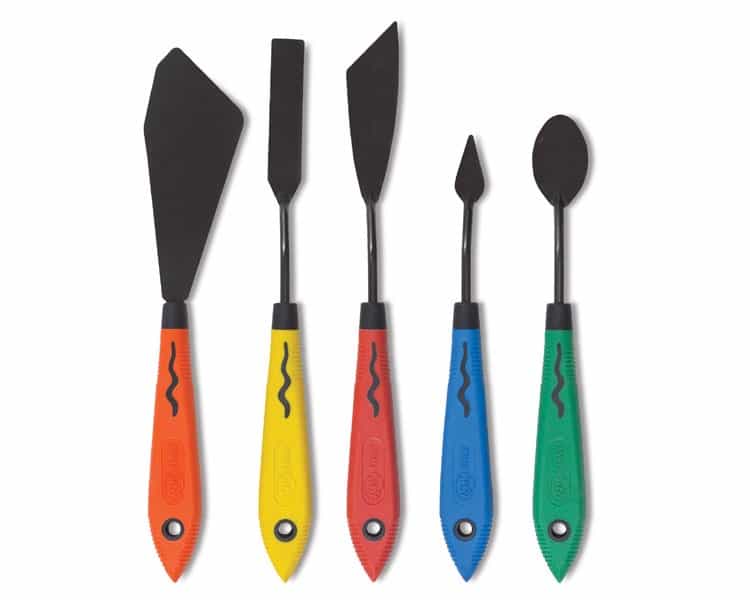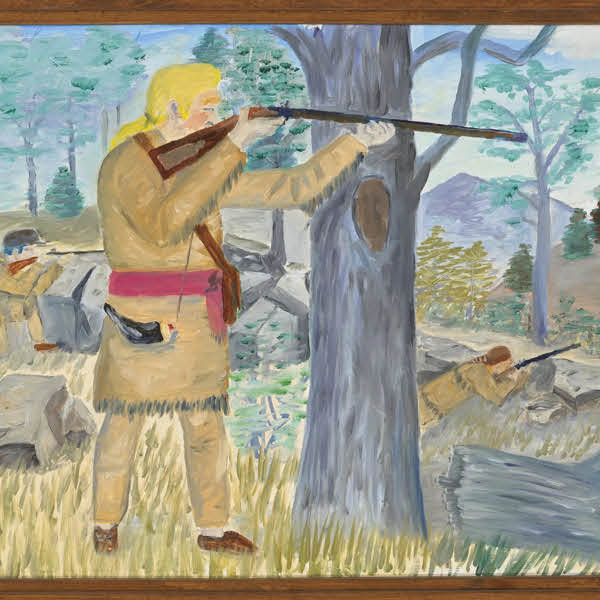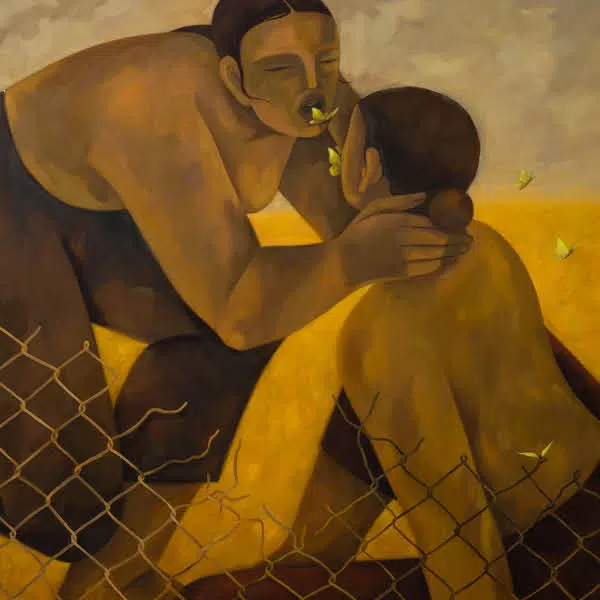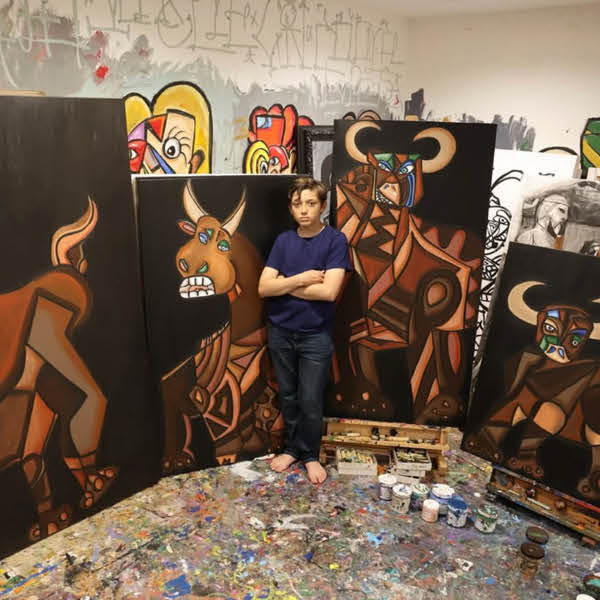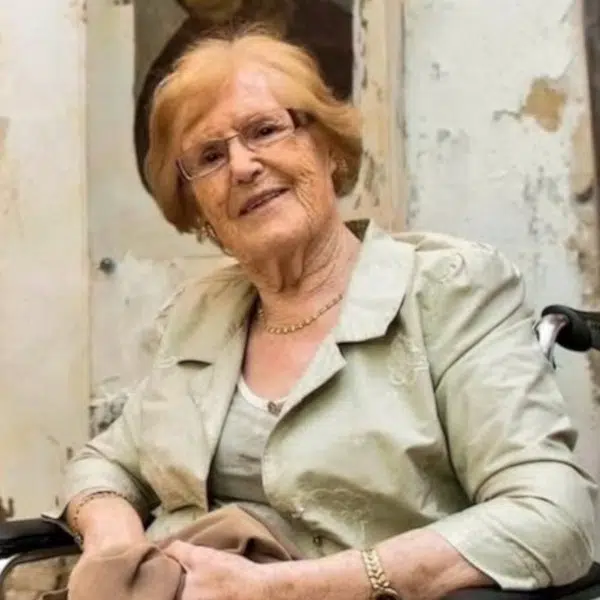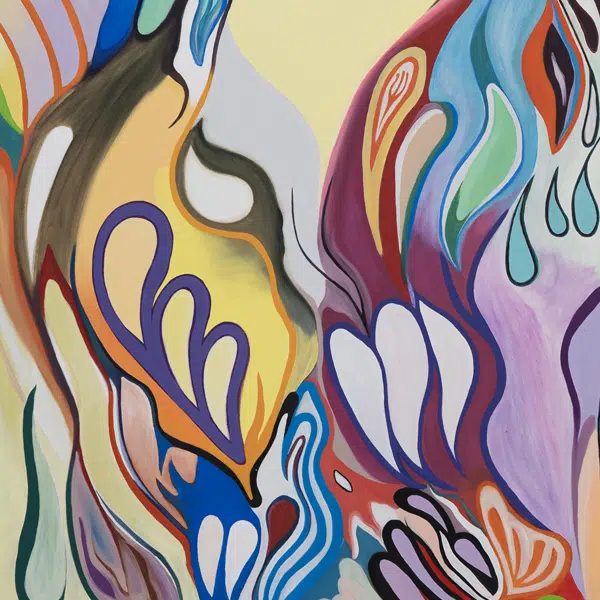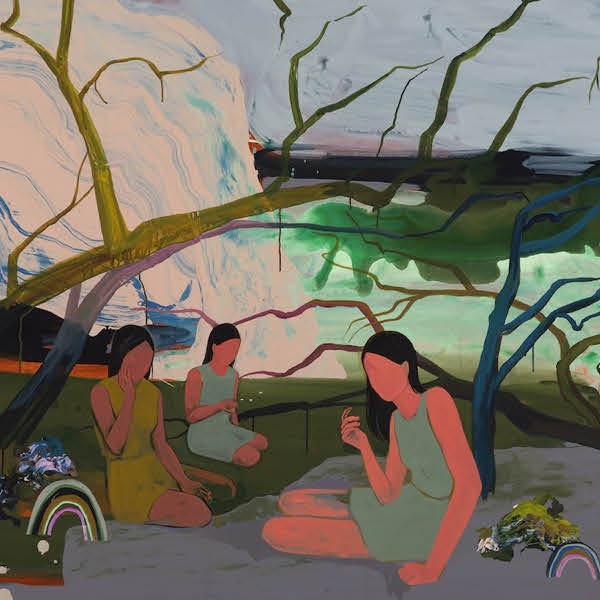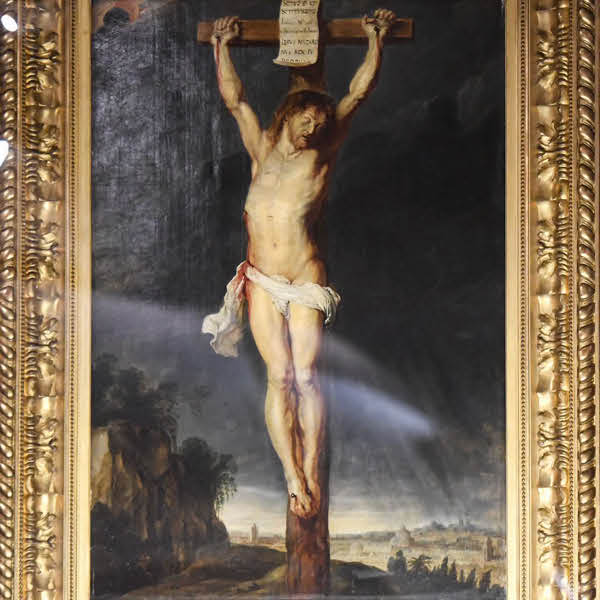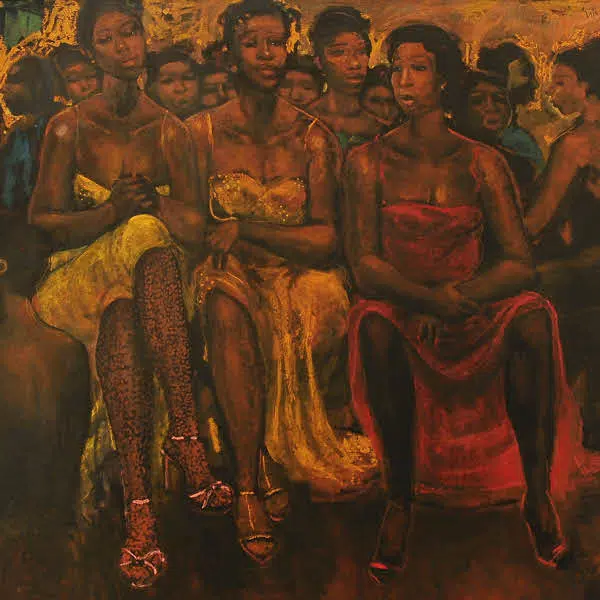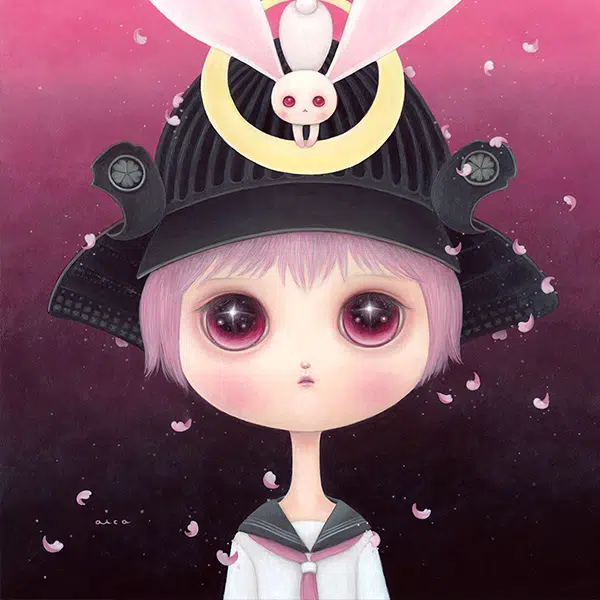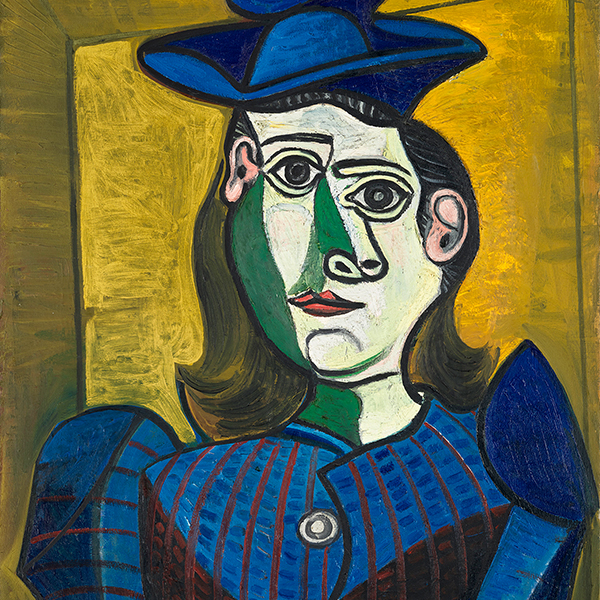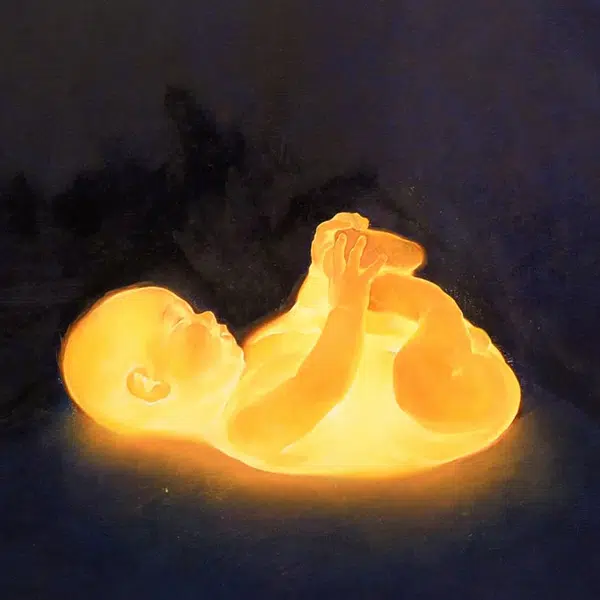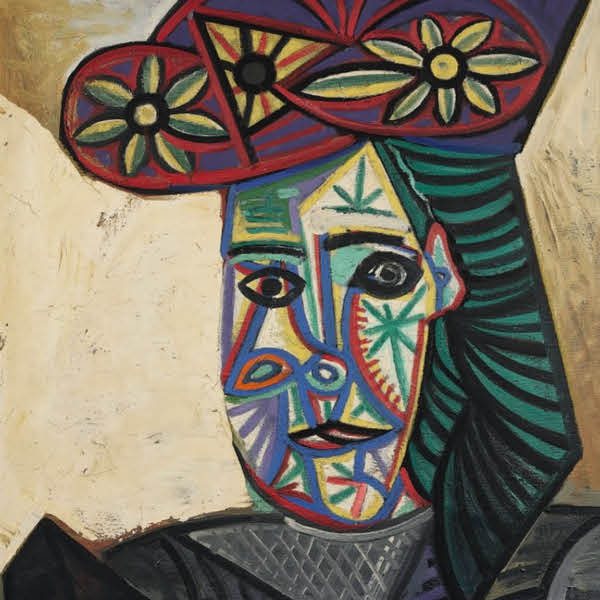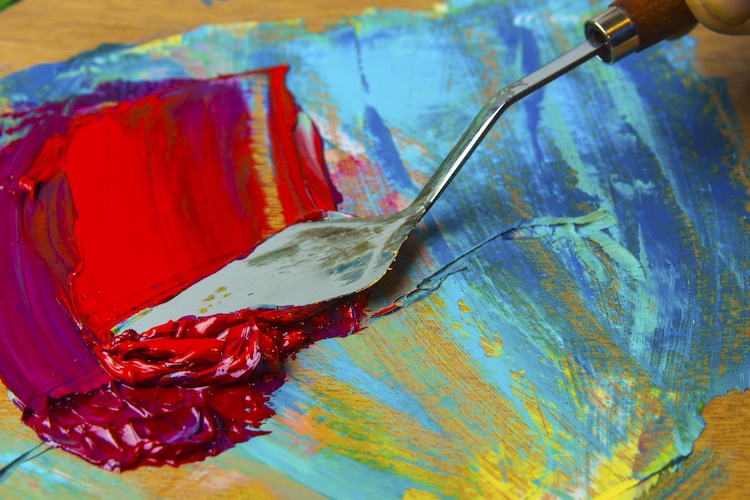
Stock Photos from Zerbor/Shutterstock
This post may contain affiliate links. If you make a purchase, My Modern Met may earn an affiliate commission. Please read our disclosure for more info.
The palette knife isn’t just a tool for mixing paint on your palette. Many artists abandon paint brushes altogether in favor of the semi-flexible blades to create paintings that are full of rich texture and sweeping blends of color. Learning to paint with a knife can be a tricky skill to master, but we’ve come up with this guide to help you get started.
What is Palette Knife Painting?
Palette knife painting is a term used to describe the impasto technique of applying paint to canvas using a painting knife. 19th-century master painter Vincent van Gogh is one artist who was known to use the method. By applying thick daubs of oil paint on canvas, he was able to achieve the swirling, textural work he became famous for. Other past artists who used both painting knives and brushes include Paul Cezanne, Marc Chagall, and Henri Matisse. Today, many contemporary artists continue to use painting knives in the same way to create expressive works that appear to come out from the canvas.
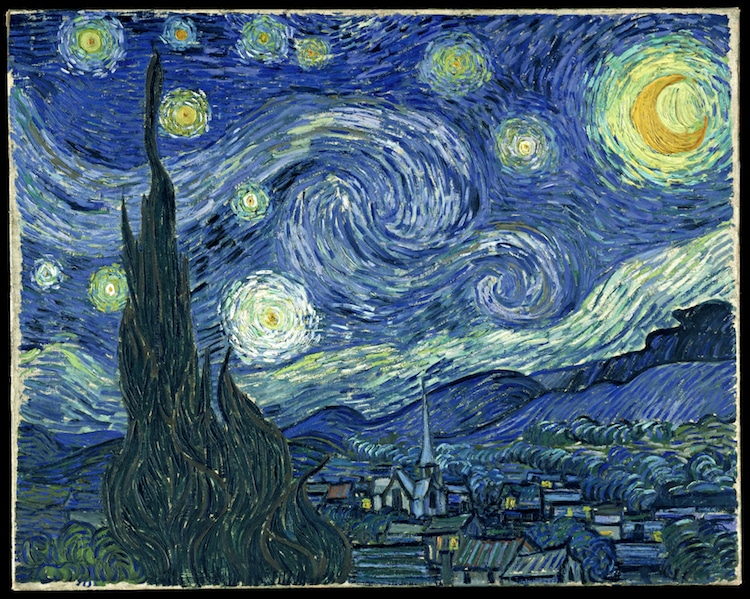
The Starry Night by Vincent van Gogh (Photo: Wikimedia Commons) Public Domain
Choosing a Knife
The terms “palette knife” and “painting knife” are often used interchangeably, but they’re quite different. A palette knife is usually straight, has a rounded tip, and is designed for mixing paints on the palette. A painting knife has a pointed tip, is slightly bent like a trowel, and is perfectly suited for painting on canvas. Their shape helps keep your fingers out of the wet paint you've just applied.
Painting knives come in a range of sizes and styles and are usually made from metal, but they’re often available in wood and plastic too. The size of the blade directly correlates to the painting effect you can achieve—a short blade produces sharp, angular strokes; a long blade allows you to put down sweeps of color; a rounded blade is ideal for dabbing spots of pigment and building up layers; and a sharply-pointed blade allows you to scratch into the painted surface to create a sgraffito effect.
How to Use a Painting Knife
Thick pigments such as oil paint and acrylic are best suited to the painting knife technique, but watercolor can also be used. To load the paint onto your knife, just sweep it up from your palette with the long edge of the knife. When using a pointed knife for daubs of paint, simply dip the tip into the paint.
Hold the handle firmly with your thumb on top and use your wrist to change angles on the canvas. There are many effects you can achieve depending on your movements. Here’s some to try:
- Use the long side of the blade to sweep pigment across your canvas, just as you would spread butter onto a slice of bread.
- Press the blade into the thickly-painted surface to create texture.
- Press the thin edge of the knife down to create fine lines.
- Use just the tip of the blade to produce small dots.
- Scratch into the paint using a pointed blade to reveal the layers underneath.
To clean your knife, simply wipe it onto a cloth.
This style of painting can often mean your work will take months to dry completely. Make sure to store your finished canvases carefully so that nothing can smudge the paint. It’s also a good idea to apply a layer of protective glaze once it’s dry.
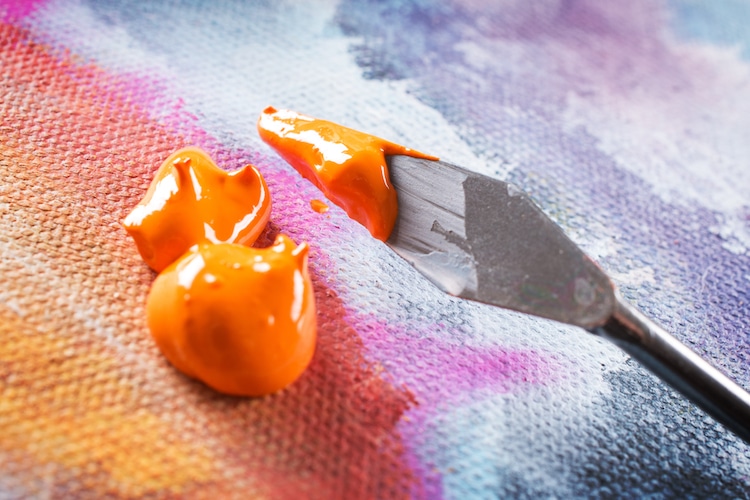
Stock Photos from Monika Wisniewska/Shutterstock
Ready to get started? Here are some contemporary palette knife paintings to inspire you.
View this post on Instagram
View this post on Instagram
View this post on Instagram
View this post on Instagram
View this post on Instagram
View this post on Instagram
View this post on Instagram
View this post on Instagram
View this post on Instagram
Related Articles:
Textured Palette Knife Paintings Capture the Majestic Beauty of Whales
Powerful Palette Knife Paintings Capture Vulnerability of Men with Mental Health Issues
Artist Masterfully Maneuvers a Palette Knife to Sculpt Dynamic Paintings
Gorgeous Palette Knife Paintings of Flowers by Carmelo Blandino
